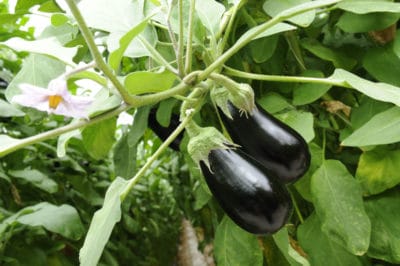What Are the Benefits of Pruning Eggplant?
Although some gardeners choose not to prune their eggplants, there are many benefits to pruning your plants on a monthly basis. When you prune back your eggplants during the growing season, especially when they seem to be lagging, you’ll be rewarded with the following benefits:
- Increases the air circulation through the stems and leaves, preventing the growth of bacteria, mold and fungus
- Helps the leaves dry faster after watering and rain, preventing the spread of disease from excess moisture
- Makes it easier to see leaf-eating pests that usually hide in the leaves
- Increases fruit production
- Produces healthier fruit by directing more energy to its development
- Faster ripening of the fruit, which is helpful in cooler climates with short growing seasons.
What Tools Are Needed for Pruning Eggplant?
When you’re ready to prune your eggplants, all you need is a sharp pair of garden shears or scissors. Before pruning, wash your shears in disinfectant, such as hot water and bleach to eliminate any bacteria or fungus from previous use.
What Are the Steps for Pruning Eggplants?
Pruning eggplants is a simple procedure. To prune your eggplants correctly, follow these five steps:
- Leave the two primary stems alone, and the stem below them, leaving a total of three stems.
- Cut all other stems off the plant, holding the shears flush with the main stem.
- Trim the suckers by placing your garden shears against the main stem, clipping off the sucker, or pinch them with your fingers if they’re small.
- Gently lift the foliage, and clip off any old, yellow leaves from the bottom of the eggplant.
Remove Clippings
After you prune your eggplants, remove all the clippings, discarding them in an area away from your garden. This prevents any bacteria, fungus, disease or pests from spreading to the other plants. Disinfect your shears when you’re all done to remove any harmful residue.
